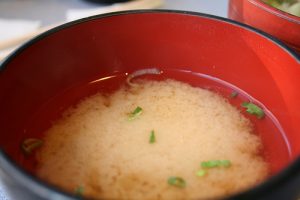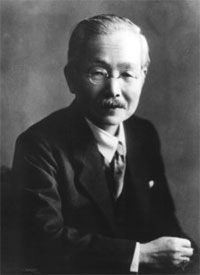
Imagine that you’re reading a tasting note for a Japanese green tea and this comes up: “Sweet with a deep umami flavor…”. You’ll end up wondering what umami is.
At first it sounds like the name of some Japanese dish…
The five tastes
We were all taught about the four tastes: sweet, sour, bitter and salty. However, there’s an additional taste called umami. It’s described as a savory taste.
By itself umami is hardly noticeable for most of us, but it balances taste and rounds the total flavor of a dish.
Examples of foods high in umami taste are tomatoes, mushrooms, seaweed, soy sauce and Parmesan cheese. We’ve all tasted umami without noticing it, breast milk is also high in umami taste!
By the way, a sixth taste could also exist. Undergoing research suggests that maybe fat is also a basic taste.
How was umami identified?
 Ikeda Kikunae (池田菊苗), a chemistry professor of the Tokyo Imperial University (now the University of Tokyo) examined kombu dashi (a kelp stock used in many Japanese dishes) and noticed that it didn’t have any of the four basic tastes.
Ikeda Kikunae (池田菊苗), a chemistry professor of the Tokyo Imperial University (now the University of Tokyo) examined kombu dashi (a kelp stock used in many Japanese dishes) and noticed that it didn’t have any of the four basic tastes.
He was determined to find the origin of kombu’s taste from that moment.
In 1907, Ikeda took 38 kilograms of kombu and boiled it. Out of that he obtained 30 grams of glutamate. He had succeeded in isolating the source of the taste of kombu, and he named the taste of glutamate as umami (うま味).
In 1908 he announced his discovery to the world, but nobody believed him. However, later studies showed than in fact glutamates and nucleotides (both responsible for umami taste) where present in a wide variety of foods and in 1985 umami was officially recognized.
A more recent study in 2000 by Nirupa Chaudhari and his colleagues from the University of Miami proved the existence of taste receptors for glutamate, thus clearing all doubts about umami being a basic taste.
Umami in Japanese green tea
Glutamate, being an amino acid, is naturally present in green tea. L-theanine, another amino acid, intensifies the umami taste besides adding sweetness to tea. Therefore, teas with high L-theanine content are rich in umami taste, such as gyokuro or high-grade sencha.
Bancha and houjicha have very little L-theanine and glutamate content, so you won’t find much umami taste there. Check out this link for a graph of amino acids for different types of Japanese green teas.
Have a good umami fix today!
Source:
Chaudhari N et al. (2000) A metabotrophic glutamate receptor variant functions as a taste receptor. Nature Neuroscience. 3(2):113-119.
http://www.s.u-tokyo.ac.jp/ja/story/newsletter/treasure/02.html




